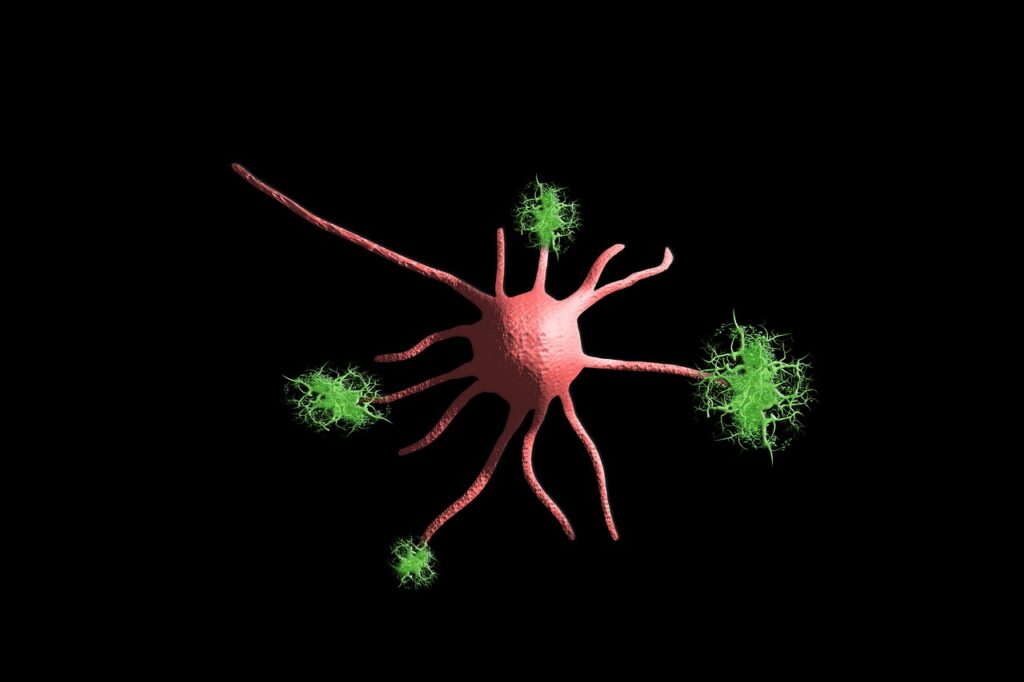New research has found out that paralyzed mice could walk again after cytokine treatment. The research team has used a “designer cytokine” to regenerate injured nerves in the spinal cords of mice with paraplegia, which is Paralysis that affects all or part of the torso, legs and pelvic organs. This treatment restored the ability to walk in around 2-3 weeks.
In adults, if at all a damaging injury occurs, neurons do not regenerate their axons. We know axons are long prjections which carry nerve signals from the brain via the spinal cord to muscles.
Thus spinal cord injuries usually cause severe disability, including paralysis of the lower half of the body, known as paraplegia.
Paraplegia has no cure yet even thought here has been decades of research on ways to regenerate neurons.
Neuroscientists from Germany published a study in 2013 showing how an immune signalling protein also called cytokine named interleukin-6 (IL-6) could promote the regeneration of optic nerve axons in lab cultures.
This IL-6 can have various effects on the immune system, such as encouraging platelet release to enable blood clot formation. The 2013 research also suggested that it could facilitate the healing of nerve cells.
However, a problem arises on the method of delivering cytokine to parts of the central nervous system which are inaccessible yet are critical for restoring movement.
The natural form of IL-6 has a relatively weak stimulatory effect on nerve regeneration.
The new research is done by the same team, all based at Ruhr-University Bochum, in Germany. They have now developed a technique that delivers a “designer” version of IL-6 deep into the central nervous system.
Promising results were found when the test was done in mice with paraplegia because of severe spinal cord injury.
The new experiment used a genetically engineered virus to introduce the genetic instructions for putting hyper-IL-6 into motor neurons in an outer region of the brain called the sensorimotor cortex.
This gene therapy approach allows cells infected with the virus to make their own hyper-IL-6.
The protein is now distributed via branching axons to more distant and inaccessible parts of the central nervous system where it triggers regeneration.
Senior author Dr Dietmar Fischer added that gene therapy treatment simulated the axonal regeneration of various nerve cells in the brain and several motor tracts in the spinal cord simultaneously.
The animals which were paralyzed walked after 2-3 weeks after taking the injection.
This was a great surprise to the team, as it had never been possible before.
The team is now focusing on ways to combine new techniques with other promising ways such as using tissue grafts to bridge the spinal injury site.
They also are researching whether the hyper-IL-6 can regenerate neurons even if the spinal injury took place several weeks earlier.
Fischer added that this could be relevant for humans too. The further experiments could show the possibilities for working on humans.
The research done to date has involved animal models of spinal cord injury, and many years of further work will be necessary to develop and test a safe, effective treatment for humans.
Journal Reference:
Leibinger, M., Zeitler, C., Gobrecht, P. et al. Transneuronal delivery of hyper-interleukin-6 enables functional recovery after severe spinal cord injury in mice. Nature Communications 12, 391 (2021). DOI: /10.1038/s41467-020-20112-4

